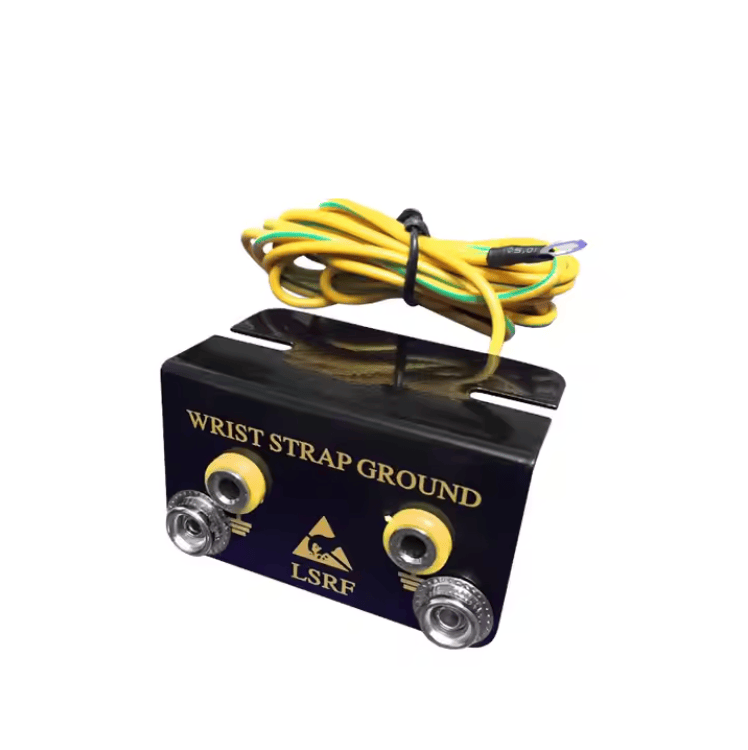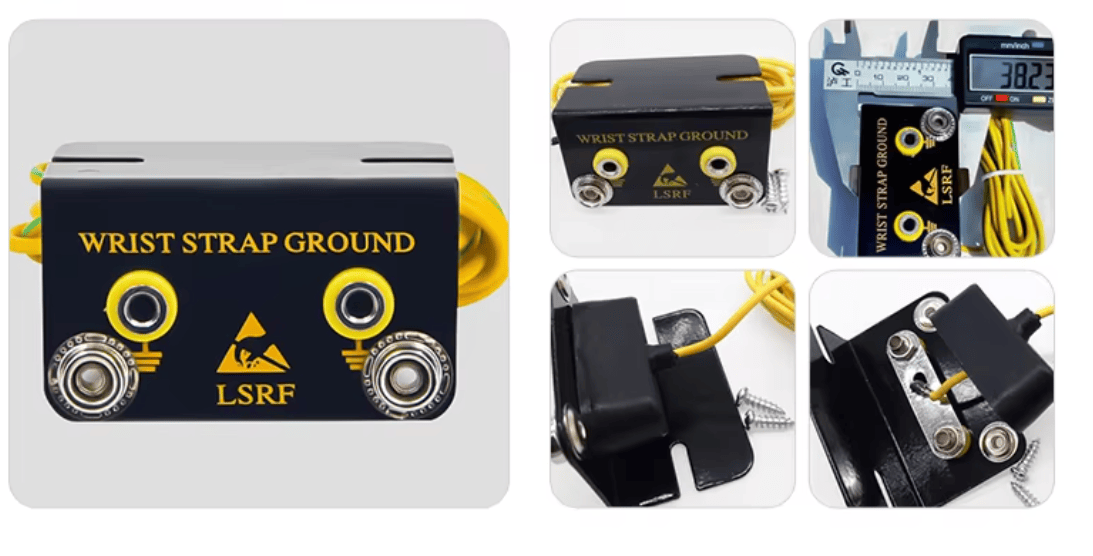

ESD grounding is the controlled discharge of electrostatic electricity (static) from a person or object to Earth ground, using a conductive path. This is essential in environments where static electricity can cause damage to electronic components, ignite flammable substances, or interfere with precision equipment.
It is a core principle of Electrostatic Discharge (ESD) control, governed by standards such as ANSI/ESD S20.20 and IEC 61340-5-1.
Static electricity is generated by human movement, friction between materials, or contact separation.
If not properly grounded, this static can:
Damage microchips and PCBs.
Cause data loss or errors in electronics.
Spark ignition in flammable environments.
Lead to latent failures in sensitive equipment (hard to detect but costly).
The goal is to create a low-resistance path for static to safely flow from the body or object to a common grounding point (CGP), and from there to Earth ground.
The pathway typically involves:
ESD control equipment (e.g., wrist strap, footwear, mats)
Grounding cords (resistance-protected)
Common Ground Point (CGP)
Verified Earth ground (building electrical ground or dedicated ESD ground)
| Device | Function |
|---|---|
| ESD Wrist Strap | Worn on wrist; connects human body to ground via resistor-protected cord. |
| esd heel straps | Used with ESD floors; connects through shoes and body to ground. |
| ESD Shoes | Integrates conductive soles for constant grounding. |
| ESD Mats | Conductive or dissipative mat that connects tools or devices to ground. |
| ESD Grounding Cord | Connects wrist strap/mat/equipment to common ground point. |
| Item | Typical Resistance Range |
|---|---|
| Wrist Strap | 10⁶ – 10⁷ ohms |
| Work Surface Mat | 10⁶ – 10⁹ ohms |
| Floor Mat | 10⁶ – 10⁹ ohms |
| Footwear + Flooring | System resistance < 3.5 × 10⁷ ohms |
| Earth Ground | < 1 ohm (building grounding standard) |
ESD grounding is used wherever sensitive electronics or static-sensitive processes are involved:
| Industry | Use Case |
|---|---|
| Electronics | Assembling or repairing PCBs, ICs, and devices |
| Semiconductor | Fabrication of chips, wafers, and testing |
| Aerospace | Handling avionics, radar, satellite electronics |
| Pharmaceuticals | Static control in cleanroom environments |
| Automotive | Assembly of ECUs, sensors, and battery packs |
| Hospitals/Labs | Diagnostic and surgical electronic equipment |
Always test wrist straps and ESD cords daily before use.
Use personal grounding testers or continuous monitors.
Keep all mats, shoes, and workstations clean and dry.
Avoid looping or crimping grounding cords.
Use only one ground point per workstation (no daisy-chaining).
Prevents costly damage to electronics.
Reduces production defects and latent failures.
Improves product reliability and lifespan.
Ensures compliance with international ESD standards.
Enhances safety in volatile or flammable areas.
Surface resistance meters /esd surface resistance meters /esd test ce
At ESD Factorys, we specialize in professional ESD protection solutions—from high-quality ESD gloves to full-scale static control systems. Protect your products, processes, and people with certified anti-static equipment.
Delivery is prompt!
By 10-year industry experts!
Diverse payment methods available!
Unbeatable cost performance!